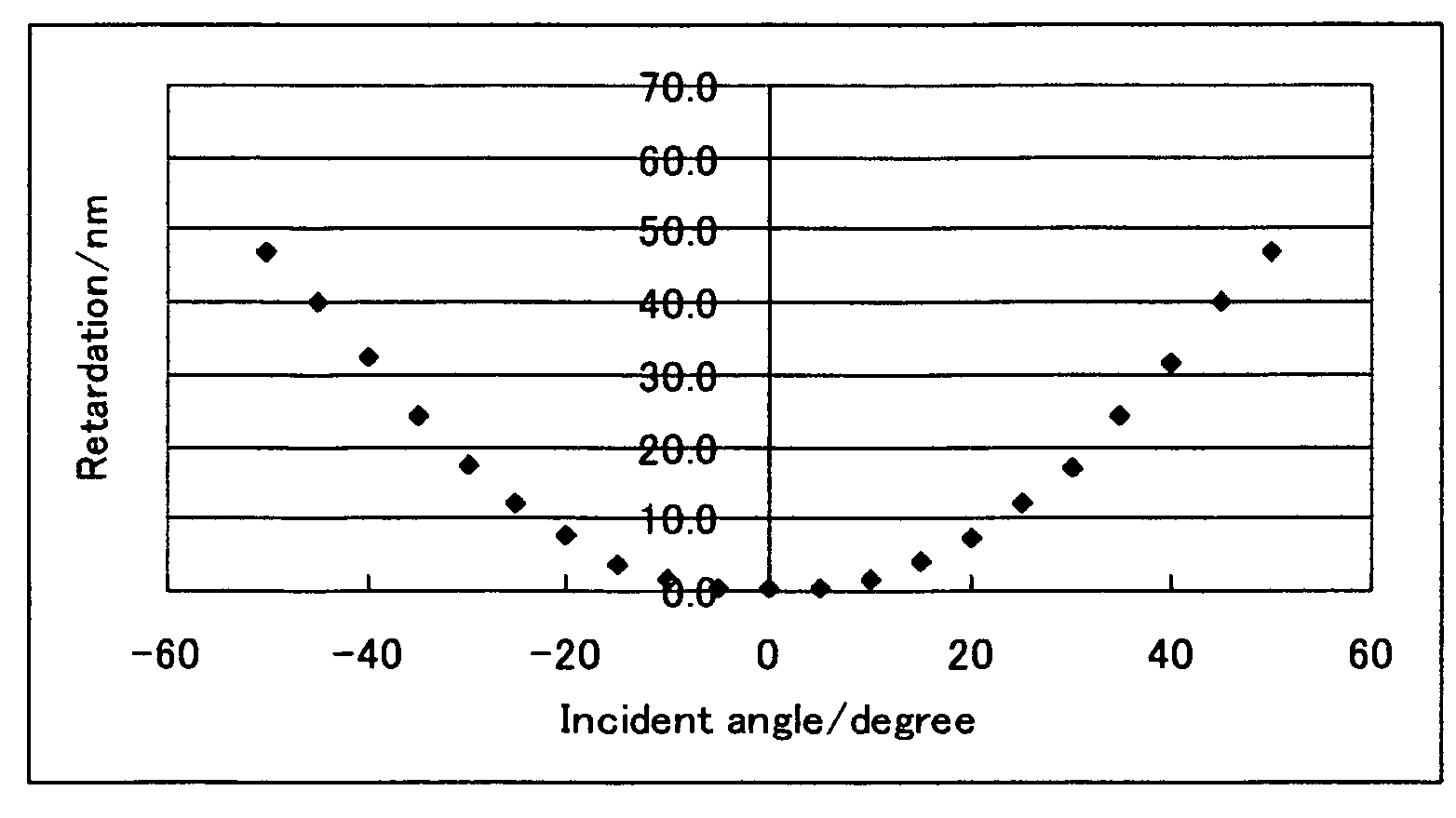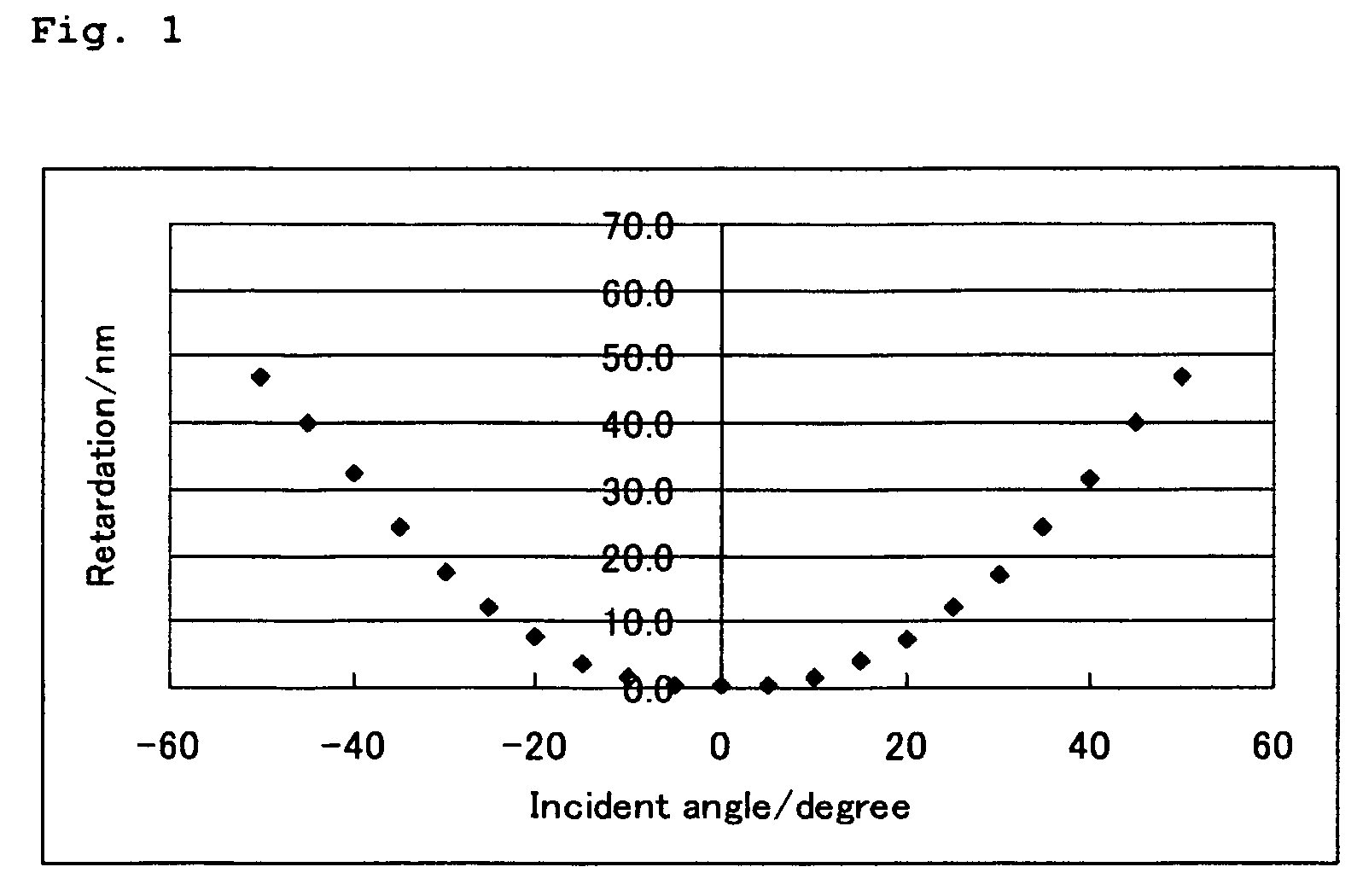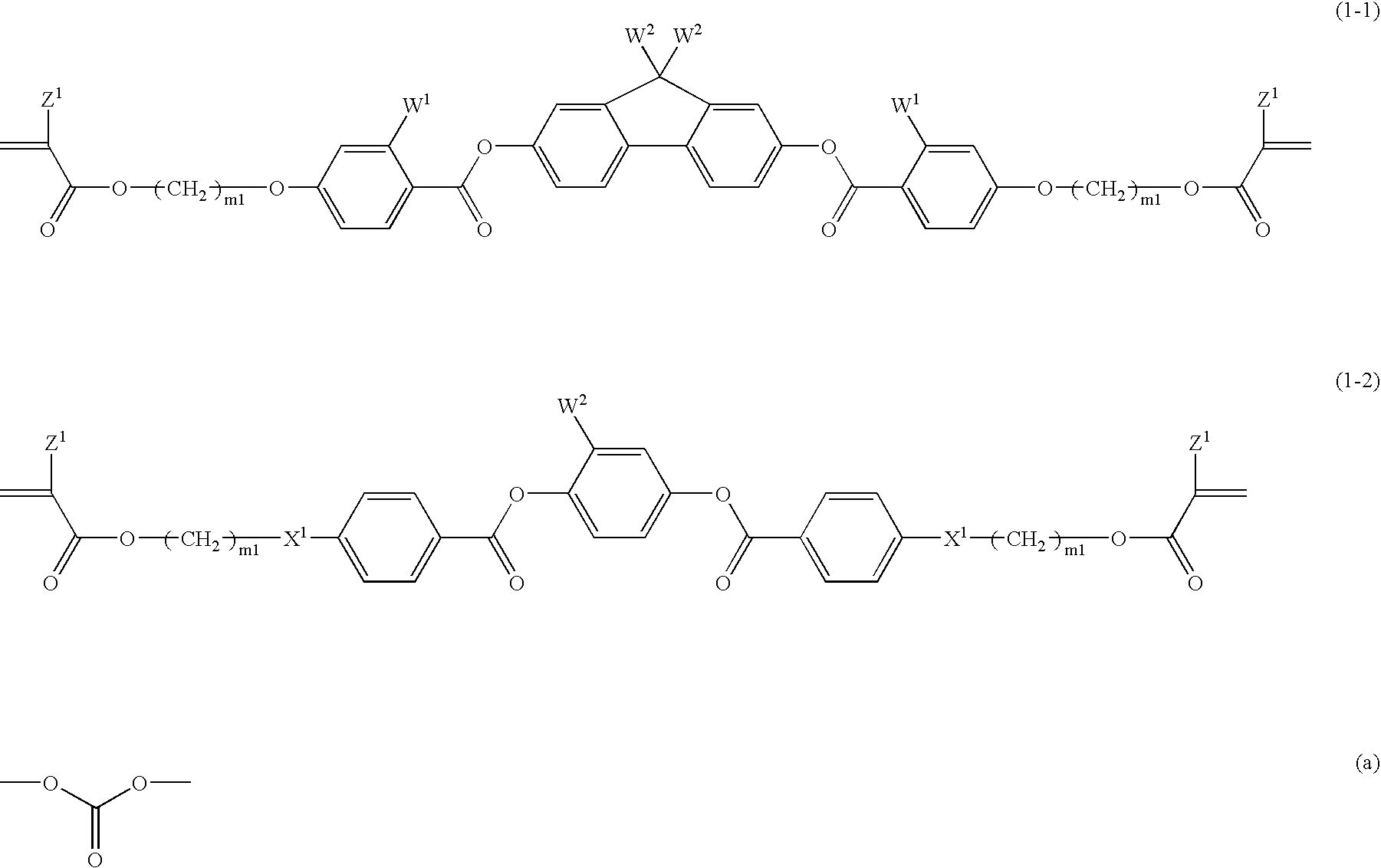Polymerizable liquid crystal composition
a technology of liquid crystal composition and polymerizable compound, which is applied in the direction of thin material processing, transportation and packaging, chemistry apparatus and processes, etc., can solve the problems of composition insufficient adhesion property and insufficient functions of only one kind of polymerizable compound, and achieve uniform homeotropic alignment property, good coating property, and excellent stability
- Summary
- Abstract
- Description
- Claims
- Application Information
AI Technical Summary
Benefits of technology
Problems solved by technology
Method used
Image
Examples
example 1
Preparation of Polymerizable Liquid Crystal Composition (1)
[0283]
Compound (1-1-3)51% by weightCompound (2-3)17% by weightCompound (3-1-1) 5% by weightCompound (4-1A-1)13% by weightCompound (4-3-2)14% by weight
[0284]The composition MIX 1 having the aforementioned formulation was prepared. A weight ratio of 0.02 of a polymerization initiator, IRGACURE 907 (produced by Ciba Specialty Chemicals Co., Ltd.) and a weight ratio of 0.02 of a polymerization initiator, CPI-110P (produced by SAN-APRO Ltd.) were added to MIX 1. Cyclohexanone was further added to the composition to provide a polymerizable liquid crystal composition (1) having a solvent content of 70% by weight.
[0285]Polyamic acid (Lixon Aligner PIA-5310, produced by Chisso Corp.) was coated on a glass substrate (S-1112, produced by Matsunami Glass Industries, Ltd.), and after drying at 80° C. for 3 minutes, baked at 210° C. for 30 minutes. The polymerizable liquid crystal composition (1) was coated on the glass substrate having p...
example 2
[0286]A polymerizable liquid crystal composition (2) was prepared in the same manner as in Example 1 except that the compound (3-1-1) was changed to the compound (3-2-2), and a liquid crystal film was obtained from the polymerizable liquid crystal composition (2) in the same manner as in Example 1. The liquid crystal film exhibited a uniform homeotropic alignment. The measurement of retardation of the film provided results that were similar to the results shown in FIG. 1. The evaluation of adhesion property of the liquid crystal film to the supporting substrate was A. The solution was good in storage stability with no change in viscosity confirmed.
example 3
[0287]A polymerizable liquid crystal composition (3) was prepared in the same manner as in Example 1 except that the compound (3-1-1) was changed to the compound (3-3-1), and a liquid crystal film was obtained from the polymerizable liquid crystal composition (3) in the same manner as in Example 1. The liquid crystal film exhibited a uniform homeotropic alignment. The measurement of retardation of the film provided results that were similar to the results shown in FIG. 1. The evaluation of adhesion property of the liquid crystal film to the supporting substrate was A. The solution was good in storage stability with no change in viscosity confirmed.
PUM
| Property | Measurement | Unit |
|---|---|---|
| tilt angle | aaaaa | aaaaa |
| tilt angle | aaaaa | aaaaa |
| tilt angle | aaaaa | aaaaa |
Abstract
Description
Claims
Application Information
 Login to View More
Login to View More - R&D
- Intellectual Property
- Life Sciences
- Materials
- Tech Scout
- Unparalleled Data Quality
- Higher Quality Content
- 60% Fewer Hallucinations
Browse by: Latest US Patents, China's latest patents, Technical Efficacy Thesaurus, Application Domain, Technology Topic, Popular Technical Reports.
© 2025 PatSnap. All rights reserved.Legal|Privacy policy|Modern Slavery Act Transparency Statement|Sitemap|About US| Contact US: help@patsnap.com



